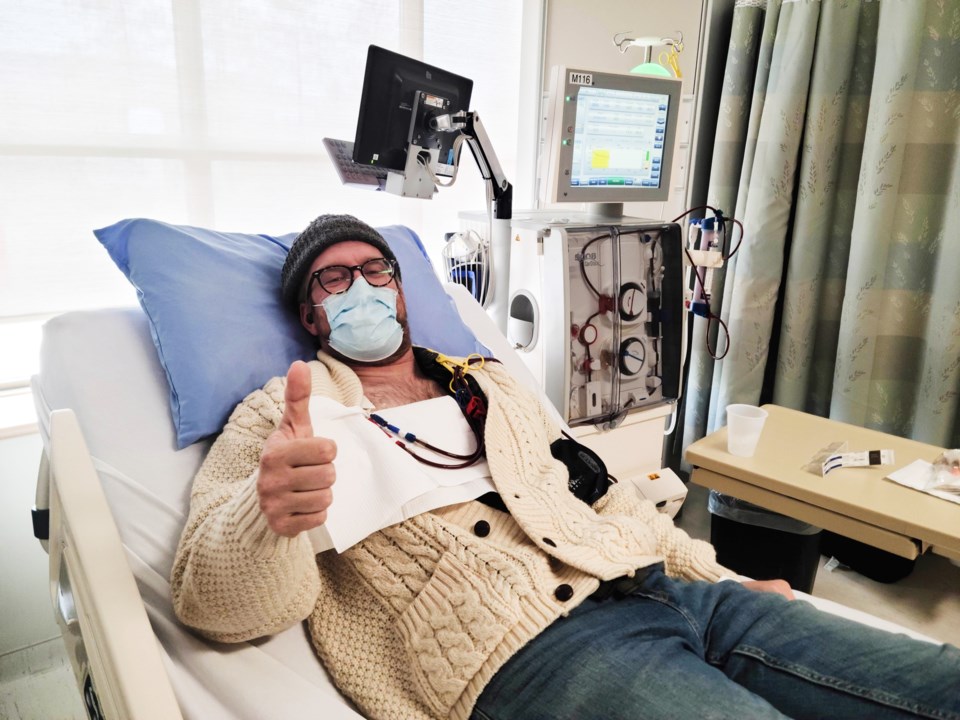At the onset of the pandemic, the number of living donor kidney transplants across Ontario fell, leaving people like Elora’s Ben Doerksen on dialysis as transplant centres and other hospitals focused on COVID-19 patients.
Many of those restrictions have eased and the number of living donor transplants has rebounded to pre-pandemic levels as Doerksen continues his search for a suitable donor.
“This last year has been a whole new and strange puzzle I could have never anticipated,” said Doerksen, who was diagnosed with end-stage kidney disease last May. “Having to maneuver all this, it reminded me you need to make the best of it.
“I’ve learned to not wait for my transplant to be happy, to live my life.”
The 31-year-old is among 1,063 people in the province on the kidney donation waiting list last year – a statistic found on the Ministry of Health’s Trillium Gift of Life Network website. That number is down from 1,121 in 2020 and 1,188 in 2019.
“At the onset of COVID, all living kidney donors shut down. They simply didn’t take any,” commented Craig Lindsay, senior manager of programs and public policy for the Ontario branch of The Kidney Foundation of Canada. “I would say they’re ramped back up and are equivalent to where they were before, but it’s not meeting the demand.”
Transplants have continued to go ahead during the pandemic. During the shutdown time, organs came from deceased donors or living donors who were already well into the “rigorous” testing process to determine suitability, Lindsay noted.
“It’s fairly intense, the testing,” he said, noting it includes bloodwork, ultrasounds, cardiac assessment and more to ensure the donor is healthy enough to make the donation, and that the organ is a “direct match” for the recipient.
“No transplant centre will allow someone to donate if it puts (the donor) at risk in any way.”
Unless he finds a suitable living donor, Doerksen could be waiting for up to eight years for a new kidney.
In the meantime he undergoes blood dialysis four times per week in Palmerston, a roughly 30-minute drive each direction. The procedure takes between three and 3.5 hours each time, eating up much of his morning.
“The strangest part of it all is, I still have all of the same life problems and work problems, now it’s just with this very strange addition of simultaneously trying to hunt down a new kidney … and also trying to fit in dialysis,” said Doerksen, who co-owns a landscape business.
“This diagnosis has certainly thrown a wrench into that, both in just inevitable physical restrictions to what I can and can’t do, but also sitting in dialysis.
“It’s quite the juggle and I’m constantly trying to adapt however I need to adapt to figure it out.”
The Elora man is hopeful he’ll find a suitable living donor, but is on the waiting list for a deceased donor just in case.
“It’s a sad, compelling story and we hear it a lot,” said Lindsay, explaining live kidney transplants tend to last longer in patients, who experience better outcomes. The wait for a deceased organ donor can range between two and eight years, he added. “It’s entirely the result of limited supply.”
A kidney transplant recipient himself, Lindsay encourages everyone to discuss their donor intentions with family and friends, and find out more if they’re interested in becoming a living donor.
“There are many misconceptions about how difficult or dangerous it is to donate a kidney,” he said, noting some of the common concerns include how it puts the donor at risk and what happens if they develop kidney failure later in life. “There’s really good evidence to say it is safe.”
For more information about living kidney donations, check out the London Health Sciences Centre website.
